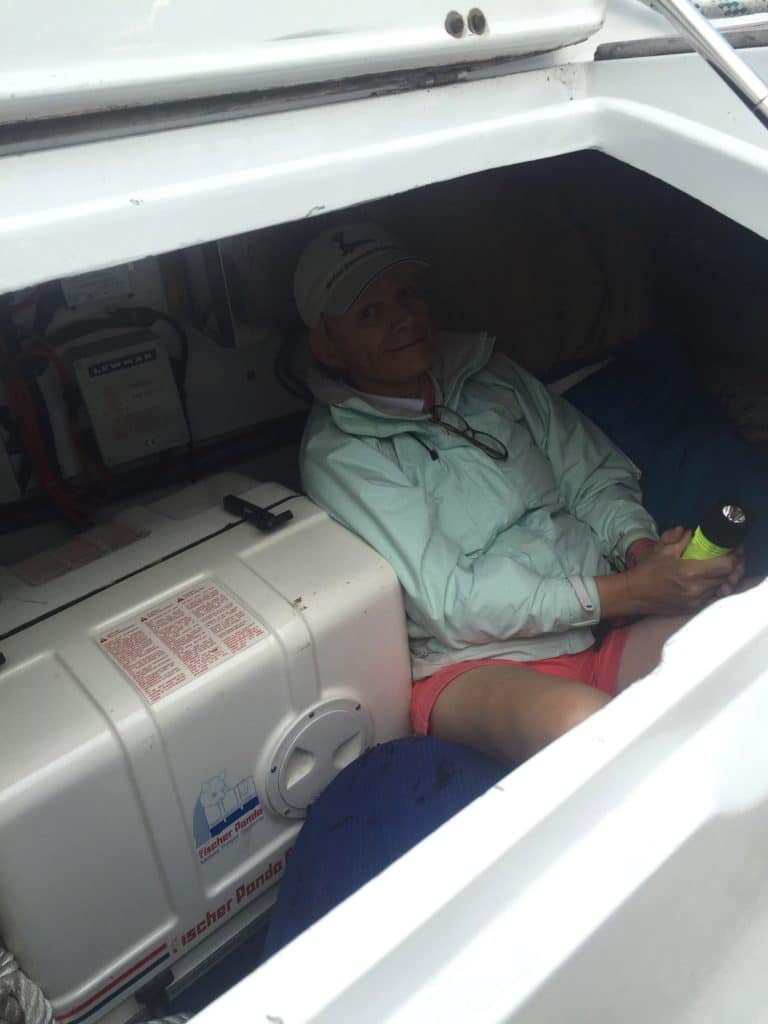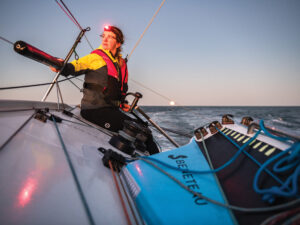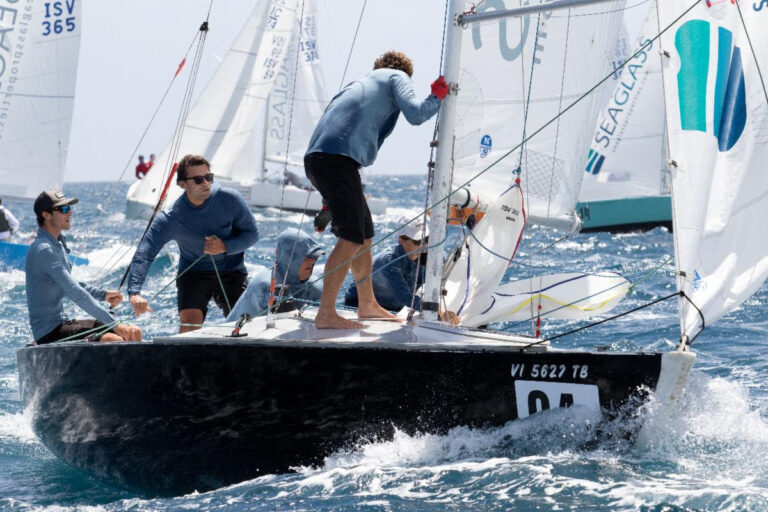
“Smoke!” Garet yells from inside the seat locker. She’s folded up, sitting on bags of sails and spare fenders. She has taken a wire brush to the electronics in the bowels of the bulkhead. “There is way too much smoke here to be safe.”
Just four hours—not yet beyond Sow and Pigs or out of the Bay—the starboard electric winch has failed, spectacularly, mid-tack. It’s a struggle to jam in a handle to override the motor to manually trim. The jib sheet groans in protest as it’s forced around the already-resistant winch.
Born and bred a classic boat lover, to me electric winches have long been the antithesis of skillful sailing. They’re slow, they’re loud, and they fail. Like many, I prefer to feel the movement of the sheet through my arms. The motor creates extra resistance on the ease, as well.
A hand emerges from the locker as Garet passes up her tools. “Let’s try this again before I come out. It’s much prettier looking now.” She’s cleared layers of buildup off of the copper wiring feeding the motor.
We press the button, nothing happens. Garet scoffs and retreats below again.
Further complicating the repair, our wind has died. With the locker open and the sheet involved in the paralyzed winch, we’re forced to retreat to even more primitive tactics to keep the sails full- trimming entirely by hand, or choose to trim on winches much smaller than should hold the load.
As we desperately try to solve the mechanical problem, Lize is on the foredeck, using a boathook to keep the jib full on the port tack—the good, old-fashioned human pole tactic. It works, and Etoile picks up a full knot in just 5 knots of breeze.
Garet emerges once again and crosses her fingers while we flip the switch. Sure enough, the motor whirrs as the robot trims the sheet. In the same moment, the wind fills from the southwest and we pick up again. We’re three miles from turning the corner and heading down the rhumb line. Three miles, one tack, and one electric winch.
Powered by Inmarsat Fleet One









